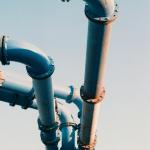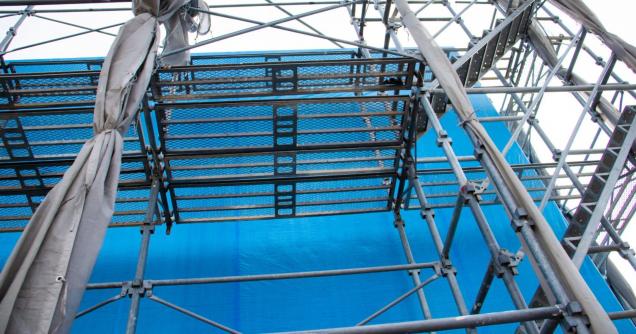
The Ultimate Guide to Pipeline Inspection
By White Chalk Road|February 01, 2024
Pipeline inspections are an important part of ensuring the safety of sites, keeping essential lines operational, and working to maintain operational capacity, long term. Through the use of NDT, or Non Destructive Testing, methods, organisations are often able to ensure the structural, and material integrity of vital pipelines, without the need to uninstall or damage those lines.
But what is pipeline inspection and what does it involve? What are the risks of unaddressed and unrecognised pipeline weaknesses? And, what are some of the potential benefits of pipeline inspections? If you’re wondering, read on. We’ll explore the importance of pipeline inspections, what they are, the potential risks associated with failing to conduct them, and the benefits of carrying them out regularly.
Pipeline Inspection Explained
So, exactly what is a pipeline inspection? Before proceeding, defining the process can be helpful. A pipeline inspection aims to determine the integrity of a pipeline through various means of testing. Pipeline inspections may analyse the material strength of a pipeline, inspect it for flaws, faults, or weaknesses, and ensure compliance with any applicable safety and environmental standards.
Importance of Pipeline Inspections
Regular pipeline inspections are an important part of maintaining the integrity, safety, and legal compliance of pipelines, and can be an important step in mitigating risks associated with ailing, damaged, misconfigured, or inadequately built pipelines.
Non Destructive Testing (NDT)
Pipeline inspections vary greatly in their methodology, and there are a number of both destructive and nondestructive tests that can be performed on pipelines. Importantly, however, many organisations rely on non destructive testing techniques that preclude the need to dismantle, damage, or uninstall existing pipelines. Conventional Non-Destructive Testing techniques can include, but are not limited to:
The Risks of Poor Pipeline Integrity
Regular testing is vital, not only because it’s an important part of regulatory and legal compliance, but because untested pipelines can carry significant safety and operational risks. A failing pipe can lead to negative outcomes, ranging from simple interruption of operations all the way to injury, the loss of life, environmental damage, and significant legal fines.
Interruption of Operations and Damage to Other Components
Perhaps the least concerning problem that a failing pipeline can present is the interruption of operations. When a pipeline fails, it must be replaced, and this often leads to the disruption of operations. Failing pipelines may also damage other adjacent systems due to factors such as incorrect pressure. While this is certainly a negative outcome, it may pale in comparison to others, such as injury, the loss of life, and regulatory woes.
Injury
One particularly concerning potential outcome of a failing pipe is injury to workers or other personnel. Failing pipelines are unsafe. They often contain high levels of pressure, and they may be carrying materials that can pose a health risk to humans. What’s more, many pipelines carry flammable, combustible, or explosive substances. As such, when damaged, they can lead to fires, explosions, and the spread of toxic substances through the air or water.
Loss of Life
Perhaps even more harrowing is the potential for a damaged pipeline to lead to the loss of life. Beyond simple injuries, pipelines can present a safety risk so severe that they can lead to the loss of life — tragic in nearly any circumstance, but only more so in a situation in which the loss of life could have been prevented through simple maintenance.
Ecological and Environmental Damage
Another devastatingly serious risk of ailing or failing pipelines is that of causing extensive environmental damage. The materials being carried through pipes are often meant to be shielded from the elements and vice versa. Failing pipes can lead to toxic or harmful substances being discharged into the environment where they stand to cause a great deal of damage.
Fines, Regulatory Action, Loss of Business
Finally, failing pipelines can lead to severe regulatory and legal consequences. Businesses that fail to protect the environment, the safety of their workers, and the safety of local communities can face severe consequences, ranging from simple fines to the loss of operating licensing.
Benefits of Conducting a Pipeline Inspection
In addition to helping prevent many of the scenarios we’ve discussed above, such as failing pipelines that could lead to injury, interruption of operations, loss of life, environmental damage, and adverse business and regulatory outcomes, some notable potential benefits can arise from regular pipeline inspections. These can include avoiding costly late repairs, ensuring efficiency of critical systems, and fostering safety.
Earlier Repairs are Often Cheaper
One of the major potential benefits of regular pipeline inspections, particularly in-service inspections, is catching problems before they become bigger problems. Initial repairs are often far less costly than replacing entire failed sections of pipelines, and preventing failures before they happen can also help the organisation preclude the costs associated with a critical failure, such as repairing other adjacent systems, replacing lost material, regulatory consequences, and cleaning up spills or leaks.
Keeping Personnel and Communities Safe
Perhaps the most important benefit of regular inspections is that they’re an important part of keeping personnel safe. This includes anybody who operates near pipelines, employees or not. Keeping pipelines regularly inspected and maintained also helps ensure the safety of local communities, who may already be wary of the potential effects of a spill or pipeline failure.
Optimising Processes
Another potential benefit of regular pipeline inspections is identifying points in systems that can be improved. By conducting inspections that identify potential structural weaknesses, material faults, or weak points, it may be possible to optimise systems to be less prone to problems, more efficient, and even more cost effective. Companies may be able to identify upcoming maintenance requirements, inefficiencies, and other issues that they can work to address proactively.
The Bottom Line
Pipeline testing is an important — and, often, necessary — part of ensuring the safety efficiency, and operating capability of pipelines. The use of regular testing is important, enabling organisations to avoid negative outcomes, ranging from interruption of operation all the way to the loss of life, injury, loss of business, and regulatory actions.
What’s more, regular pipeline inspections can help organisations better plan, enabling them to proactively identify weaknesses in pipelines before they become more expensive to repair or more dangerous. Testing can take many forms, and for many organisations, non-destructive testing, or NDT, is an ideal option, enabling them to perform necessary safety and performance testing without damaging or dismantling vital pipelines that are in use.
If you’re looking for NDT pipeline testing services, don’t hesitate to get in touch. At Vertech Group, we offer a range of conventional non-destructive testing techniques. To learn more or get started, contact us today.
But what is pipeline inspection and what does it involve? What are the risks of unaddressed and unrecognised pipeline weaknesses? And, what are some of the potential benefits of pipeline inspections? If you’re wondering, read on. We’ll explore the importance of pipeline inspections, what they are, the potential risks associated with failing to conduct them, and the benefits of carrying them out regularly.
Pipeline Inspection Explained
So, exactly what is a pipeline inspection? Before proceeding, defining the process can be helpful. A pipeline inspection aims to determine the integrity of a pipeline through various means of testing. Pipeline inspections may analyse the material strength of a pipeline, inspect it for flaws, faults, or weaknesses, and ensure compliance with any applicable safety and environmental standards.
Importance of Pipeline Inspections
Regular pipeline inspections are an important part of maintaining the integrity, safety, and legal compliance of pipelines, and can be an important step in mitigating risks associated with ailing, damaged, misconfigured, or inadequately built pipelines.
Non Destructive Testing (NDT)
Pipeline inspections vary greatly in their methodology, and there are a number of both destructive and nondestructive tests that can be performed on pipelines. Importantly, however, many organisations rely on non destructive testing techniques that preclude the need to dismantle, damage, or uninstall existing pipelines. Conventional Non-Destructive Testing techniques can include, but are not limited to:
- Ultrasonic Testing
- Magnetic Particle testing,
- Dye Penetrant Testing and Inspection,
- Eddy Current Testing and Inspection,
- Film Radiographic Testing,
- Digital Radiography,
- Corrosion Mapping,
- Proof Load Testing,
- And numerous others.
The Risks of Poor Pipeline Integrity
Regular testing is vital, not only because it’s an important part of regulatory and legal compliance, but because untested pipelines can carry significant safety and operational risks. A failing pipe can lead to negative outcomes, ranging from simple interruption of operations all the way to injury, the loss of life, environmental damage, and significant legal fines.
Interruption of Operations and Damage to Other Components
Perhaps the least concerning problem that a failing pipeline can present is the interruption of operations. When a pipeline fails, it must be replaced, and this often leads to the disruption of operations. Failing pipelines may also damage other adjacent systems due to factors such as incorrect pressure. While this is certainly a negative outcome, it may pale in comparison to others, such as injury, the loss of life, and regulatory woes.
Injury
One particularly concerning potential outcome of a failing pipe is injury to workers or other personnel. Failing pipelines are unsafe. They often contain high levels of pressure, and they may be carrying materials that can pose a health risk to humans. What’s more, many pipelines carry flammable, combustible, or explosive substances. As such, when damaged, they can lead to fires, explosions, and the spread of toxic substances through the air or water.
Loss of Life
Perhaps even more harrowing is the potential for a damaged pipeline to lead to the loss of life. Beyond simple injuries, pipelines can present a safety risk so severe that they can lead to the loss of life — tragic in nearly any circumstance, but only more so in a situation in which the loss of life could have been prevented through simple maintenance.
Ecological and Environmental Damage
Another devastatingly serious risk of ailing or failing pipelines is that of causing extensive environmental damage. The materials being carried through pipes are often meant to be shielded from the elements and vice versa. Failing pipes can lead to toxic or harmful substances being discharged into the environment where they stand to cause a great deal of damage.
Fines, Regulatory Action, Loss of Business
Finally, failing pipelines can lead to severe regulatory and legal consequences. Businesses that fail to protect the environment, the safety of their workers, and the safety of local communities can face severe consequences, ranging from simple fines to the loss of operating licensing.
Benefits of Conducting a Pipeline Inspection
In addition to helping prevent many of the scenarios we’ve discussed above, such as failing pipelines that could lead to injury, interruption of operations, loss of life, environmental damage, and adverse business and regulatory outcomes, some notable potential benefits can arise from regular pipeline inspections. These can include avoiding costly late repairs, ensuring efficiency of critical systems, and fostering safety.
Earlier Repairs are Often Cheaper
One of the major potential benefits of regular pipeline inspections, particularly in-service inspections, is catching problems before they become bigger problems. Initial repairs are often far less costly than replacing entire failed sections of pipelines, and preventing failures before they happen can also help the organisation preclude the costs associated with a critical failure, such as repairing other adjacent systems, replacing lost material, regulatory consequences, and cleaning up spills or leaks.
Keeping Personnel and Communities Safe
Perhaps the most important benefit of regular inspections is that they’re an important part of keeping personnel safe. This includes anybody who operates near pipelines, employees or not. Keeping pipelines regularly inspected and maintained also helps ensure the safety of local communities, who may already be wary of the potential effects of a spill or pipeline failure.
Optimising Processes
Another potential benefit of regular pipeline inspections is identifying points in systems that can be improved. By conducting inspections that identify potential structural weaknesses, material faults, or weak points, it may be possible to optimise systems to be less prone to problems, more efficient, and even more cost effective. Companies may be able to identify upcoming maintenance requirements, inefficiencies, and other issues that they can work to address proactively.
The Bottom Line
Pipeline testing is an important — and, often, necessary — part of ensuring the safety efficiency, and operating capability of pipelines. The use of regular testing is important, enabling organisations to avoid negative outcomes, ranging from interruption of operation all the way to the loss of life, injury, loss of business, and regulatory actions.
What’s more, regular pipeline inspections can help organisations better plan, enabling them to proactively identify weaknesses in pipelines before they become more expensive to repair or more dangerous. Testing can take many forms, and for many organisations, non-destructive testing, or NDT, is an ideal option, enabling them to perform necessary safety and performance testing without damaging or dismantling vital pipelines that are in use.
If you’re looking for NDT pipeline testing services, don’t hesitate to get in touch. At Vertech Group, we offer a range of conventional non-destructive testing techniques. To learn more or get started, contact us today.



